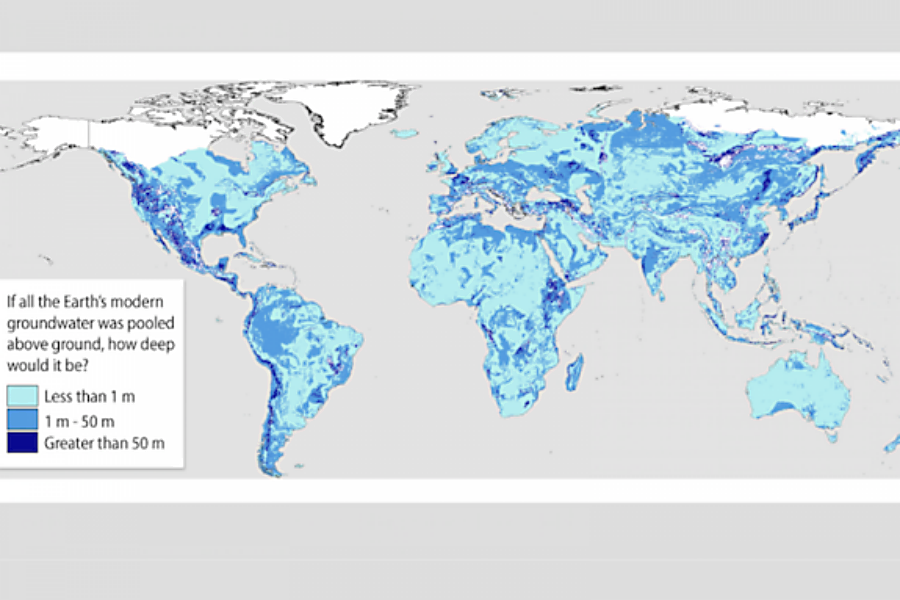Scientists tally Earth's hidden mega-stashes of groundwater
Loading...
The first comprehensive study of the planet's groundwater revealed not only how much of Earth’s water lies beneath its surface, but also how old it is.
The study, published Tuesday by the journal Nature Science, followed up on a hasty estimate of the planet's water supply that had not been updated since the 1970s, according to a press release.
The water beneath the Earth's surface would - if somehow spread horizontally in something resembling an epic remake of "The Ten Commandments" - cover the continents with 600 feet of water. That is a volume of 6 quintillion gallons, wrote Deborah Netburn for the Los Angeles Times.
"This has never been known before," said lead author Tom Gleeson from the University of Victoria in a press release.
Most of this water, it turns out, is quite old. Researchers gathered data on which bodies of water had trickled underground less than 50 years ago. They were interested in studying how quickly water is traveling back up to the surface and into the regular water cycle, as well as determining if “newer” water contained acids or pollutants from surface industrialization.
The vast majority – 94.4 percent – of underground water has been there for more than 50 years, meaning only about 5 percent of the planet’s underground reservoir has seen the sun recently, George Dvorsky wrote for Gizmodo. The fresh, young water closer to the surface is purer and much easier for humans and other life to use, but the older water deeper down can be saltier than ocean water and sometimes contains arsenic and uranium.
Humid land areas such as the Amazon, the Congo, Indonesia, and the Rocky Mountains had high levels of groundwater. The Sahara Desert and the Australian Outback did not.
"Intuitively, we expect drier areas to have less young groundwater and more humid areas to have more, but before this study, all we had was intuition," said co-author Kevin Befus, who studied groundwater for his doctoral thesis at the University of Texas at Austin, in a press release. "Now, we have a quantitative estimate that we compared to geochemical observations."
A map shows concentrations of groundwater on all the continents except the northernmost and southernmost land masses, for which there is no data, but the permafrost in these areas likely contains little groundwater, according to Gizmodo.
Researchers used multiple datasets, 40,000 groundwater models, and data from more than a million watersheds, according to a press release. They found 23 million cubic kilometers of underground water.






